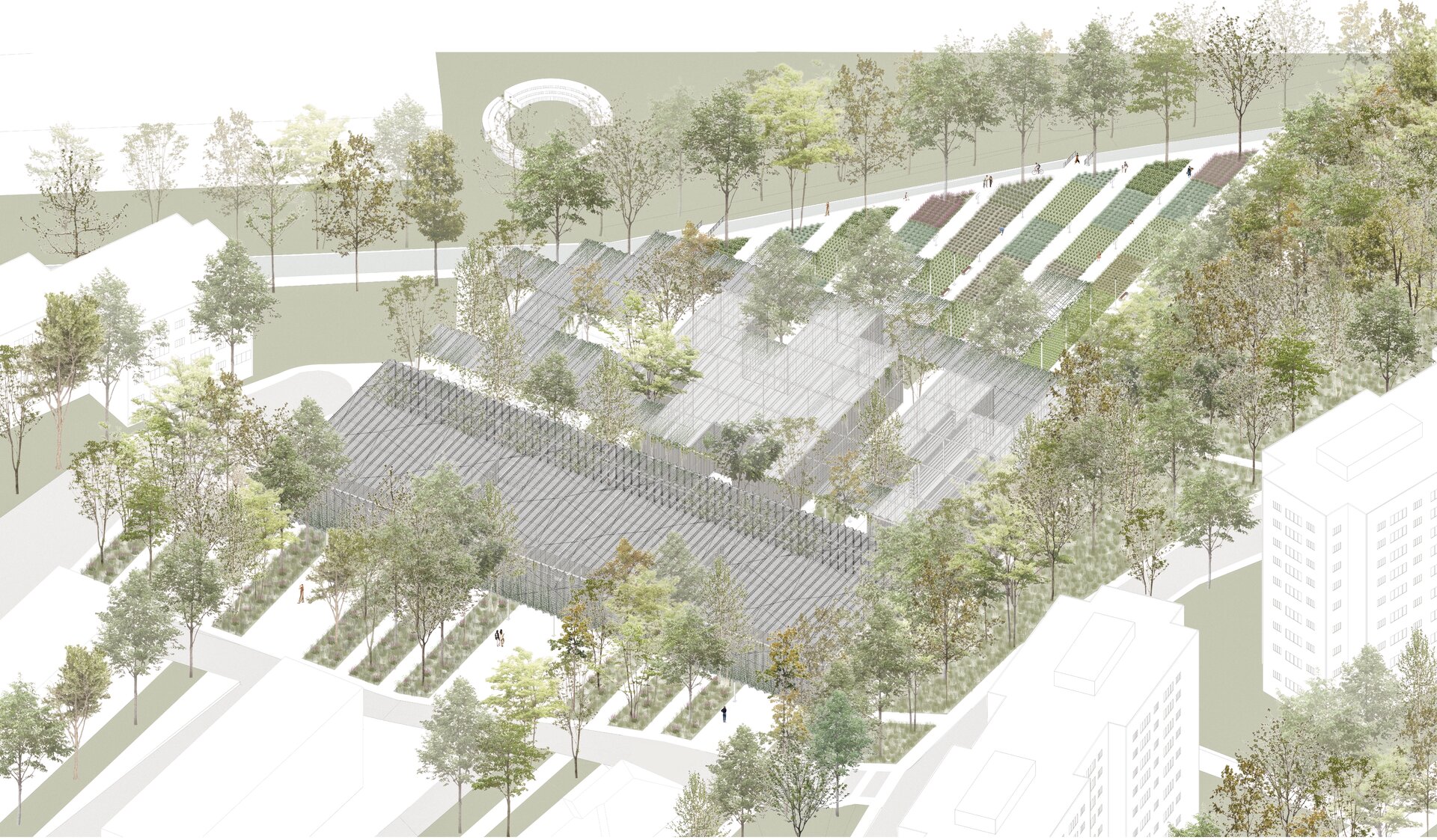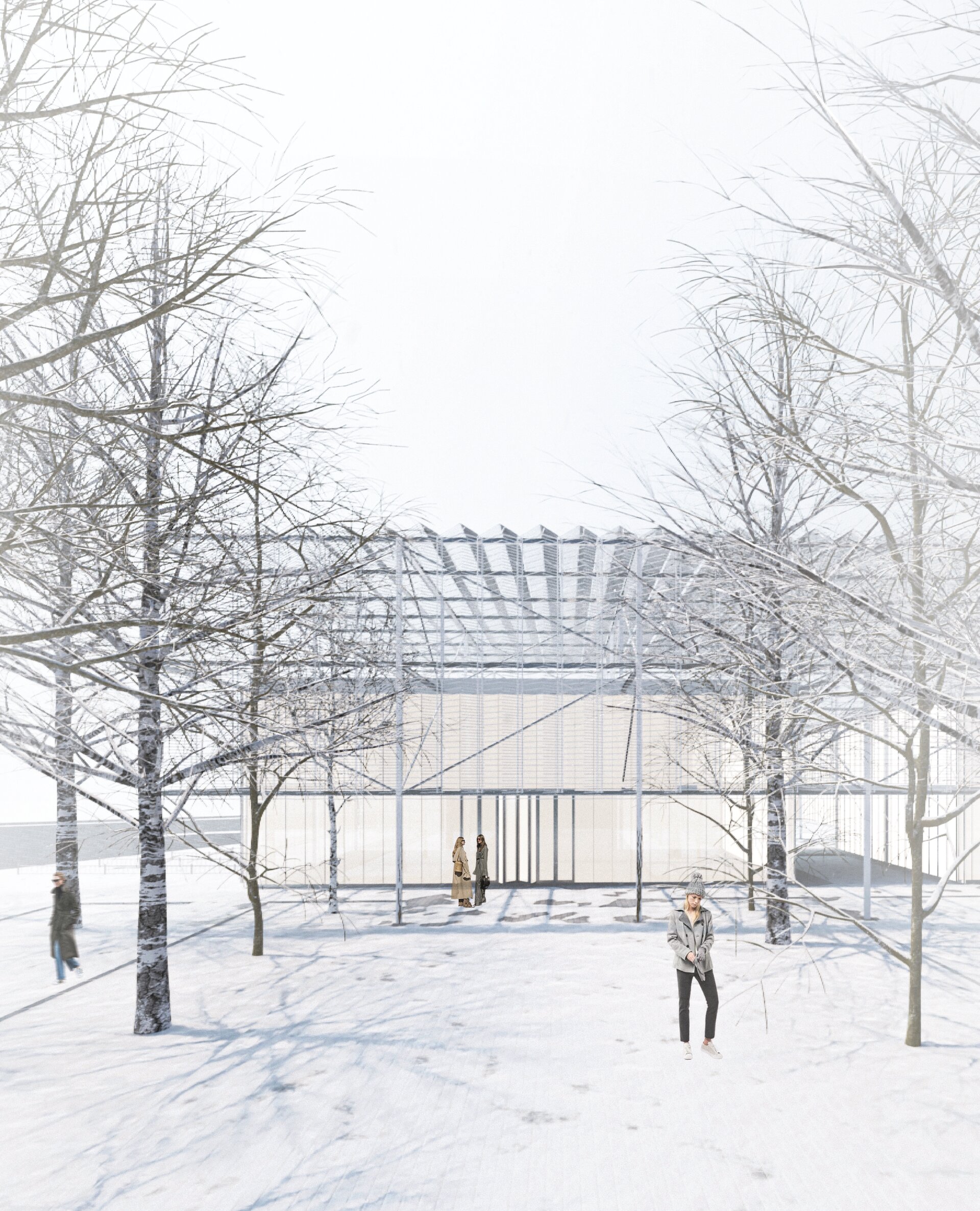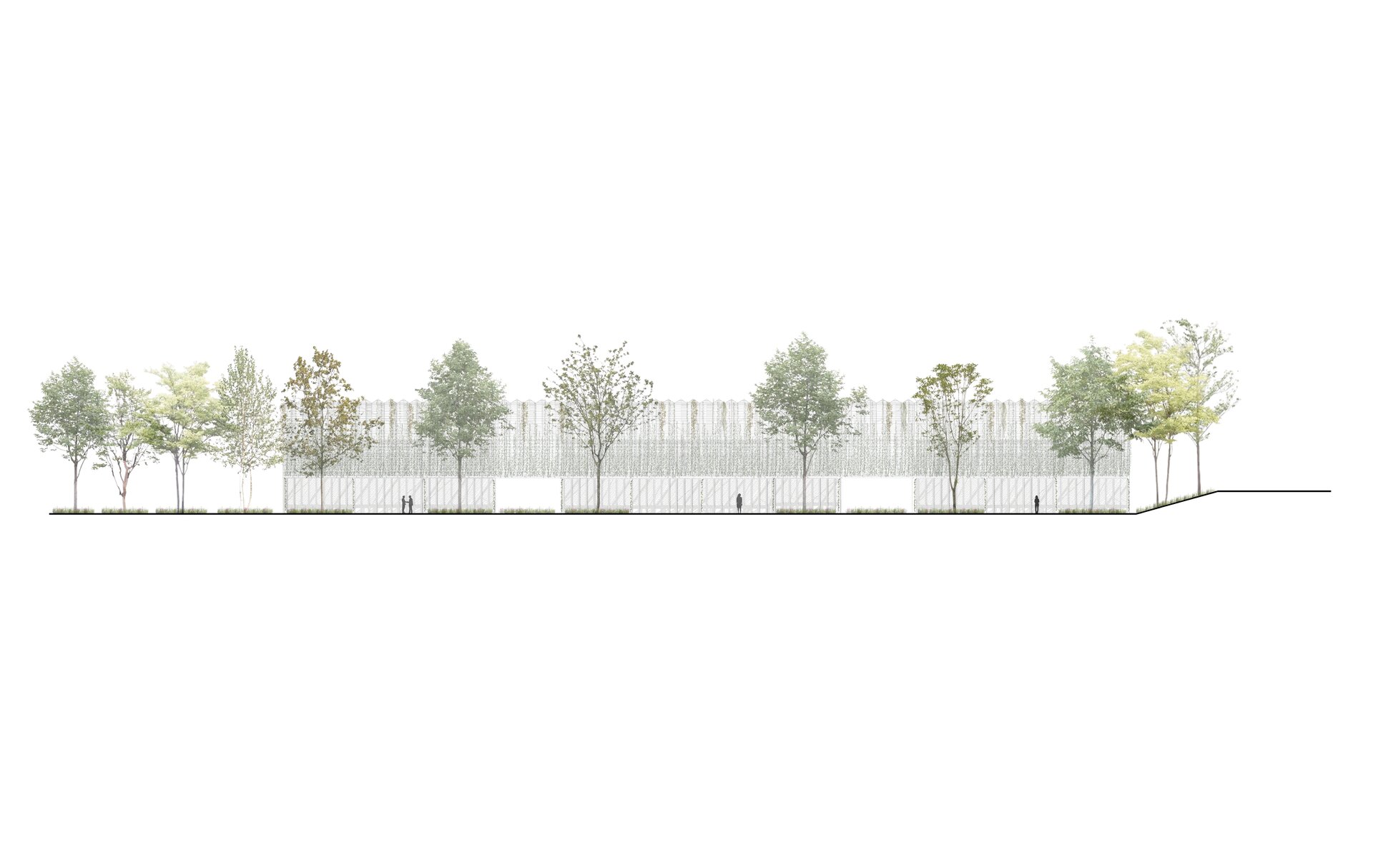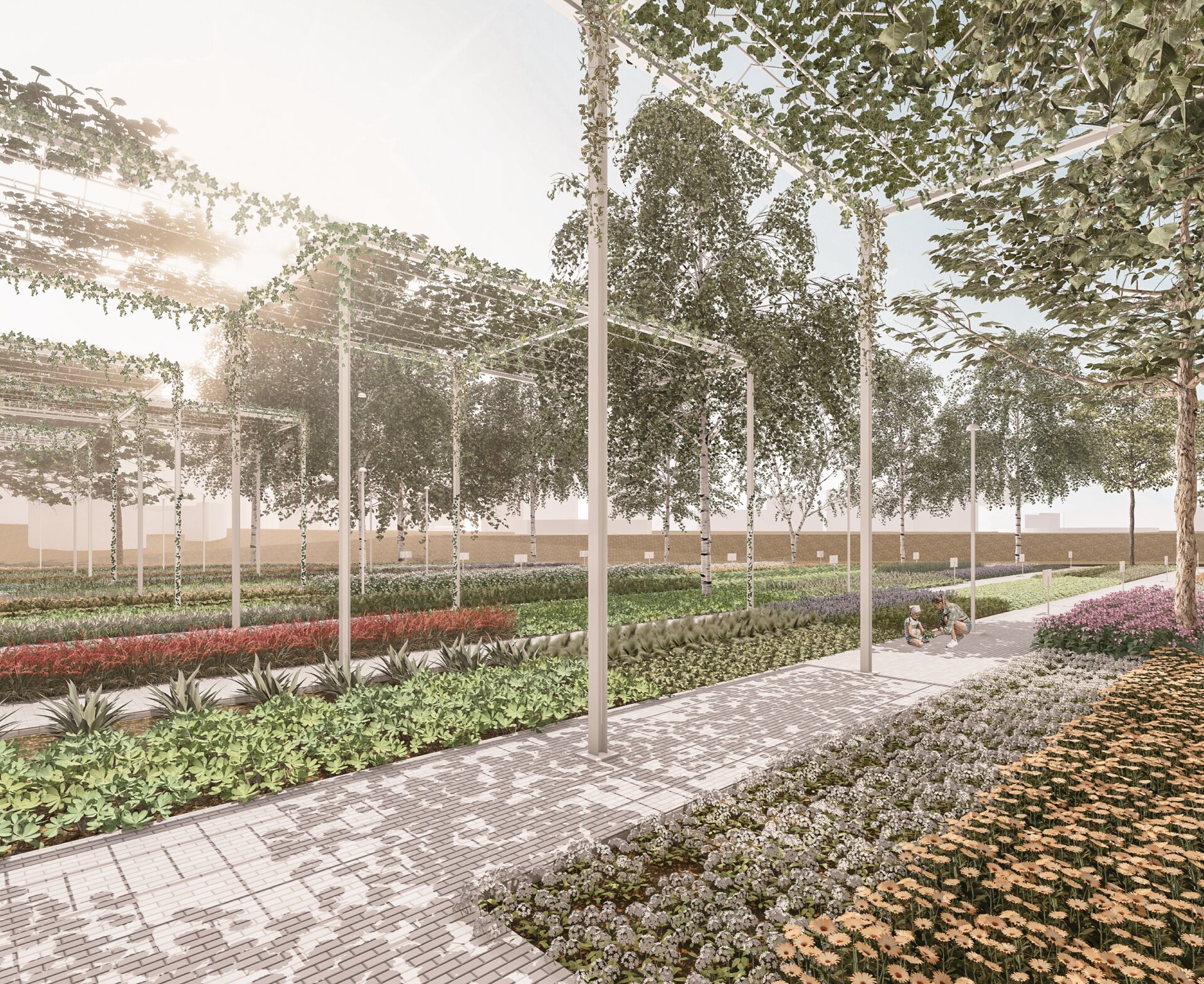
Agricultural Research Center in Cluj
Authors’ Comment
The diploma project is located in the Mănăștur neighborhood of Cluj, a place that developed rapidly during the communist period. The traditions of the inhabitants, including agricultural activities, are preserved through the existing community gardens. In addition to the existence of improvised community gardens on the site, in the Mănăștur neighborhood of Cluj there are numerous events, courses and workshops on the theme of agriculture, including courses for students from schools near the site. These activities, although frequent, take place in spaces that are not properly designed. The degree project responds to the wishes and ambition of the community to continue and develop these activities by creating an integrated agricultural research center.
The concept is based on non-invasive interventions, using transparent glass buildings and open structures, allowing vegetation to invade the structures and blur the boundaries between architecture and nature. The center will include community gardens, a market for selling produce, greenhouses and educational facilities, benefiting from the proximity of institutions in the area.
The structure of the project follows the guidelines of agricultural fields, gradually transitioning from research buildings to community gardens. As it approaches the community gardens, the structure gradually disintegrates, creating filters from the street to the relationship with the river. The exploration of the space varies according to the season, with vegetation growing on the metal structure and generating natural shadows. These elements facilitate the connection between the community and the adjacent landscape, providing a conducive environment for agricultural and educational activities.
Community gardens offer residents the opportunity to be directly involved in growing and caring for plants, and the local produce market supports the local economy. At the same time, the project benefits from the proximity of educational and research institutions in the area, creating opportunities for collaboration and development of educational programs. The project benefits from the proximity of educational and research institutions in the area, creating opportunities for collaboration and development of educational programs
The open and transparent structure of the buildings allows visitors to observe agricultural processes and become familiar with sustainable practices. These buildings also serve as spaces for workshops, conferences and community events, strengthening the connection between residents and the research center.
- Conversion and extension of the former Bourul Factory in Bucharest. Urban Hub for students
- Reimagining the Leonida Garages - Contemporary Cultural Space Bucharest
- Lost Bucharest Museum
- Recovery of Callimachi-Văcărescu ensemble. Cultural and touristic circuit at Mănești, Prahova
- Memorial Museum of Bucharest Pogrom
- ICA - Institute of Cinematographic Arts (in Timisoara)
- Landscape habitat: Extension and conversion of the former imperial baths of Herculane
- Constanța History and Archeology Museum the New Gallery
- Extension of the Independence Cinema with a Film and Media Faculty, Târgoviște
- Agricultural Research Center in Cluj
- City and Community - Youth Community Center on Dacia Boulevard, Bucharest
- “George Coșbuc” Flower Market - Rehabilitation and Expansion
- “Baba Novac” neighborhood center - Rehabilitation of the “Rucăr” commercial complex in Balta Albă, Bucharest
- Medresa, cultural center for Medgidia’s turkish-tatar community. Reintegrating the turkish bath into the urban circuit
- Workspaces for Creative Industries. Christo Gheorgief House
- Day-Care Centre. Nifon Mitropolitul House
- Archaeology Center in the Constanța Peninsula
- Tab. Socio-cultural Incubator. Conversion of the Bucovat Tannery, Dolj
- Community Center, Ferentari
- Art school for children
- Recomposing a lost urbanity. Cultural intervention in the Historical Center of Brăila, Romania
- Factory, School, Campus. Vocational School on the Abandoned Drajna Timber Factory Site, Măneciu County
- Interactive music center
- Catechesis center on Biserica Amzei street, Bucharest
- Center of creation and contemporary culture
- Cultural center - Extension of the “Radu Stanca” National Theater in Sibiu
- Bolta Florești - Community Ensemble
- Digital Fabrication Laboratories. Adaptive reuse of the “Ciocanul” Trade School, Bucharest
- The conversion of the chapel within the former noble estate of the Csávossy family, Bobda
- The house with ogives
- Cultural Forum in Brăila
- Sportul Studențesc Palaestra
- Forest of Arts - Cultural Center & Artist Residencies Timișoara
- Transformation and durability: Red Sand Fort, intervention in the Thames Estuary
- Danube waterfront reimagined. Restoration and conversion of the former shipyard of Drobeta-Turnu Severin, RO
- Revitalization of the Neculescu Inn
- Creative and Research Hub “Unfinished Section Studio”
- Vocational School in Brasov
- Extension of the Pomiculture Research and Development Centre in Băneasa, Bucharest
- Arts and Science Park, Splaiul Unirii Bd.162, Bucharest
- Behind the apartment blocks. Urban reweaving. The Theodor Sperantia Neighbourhood
- The House of the Romanian Academy - From Object to urban fabric
- Chisinau Museum of Modern and Contemporary Art




















